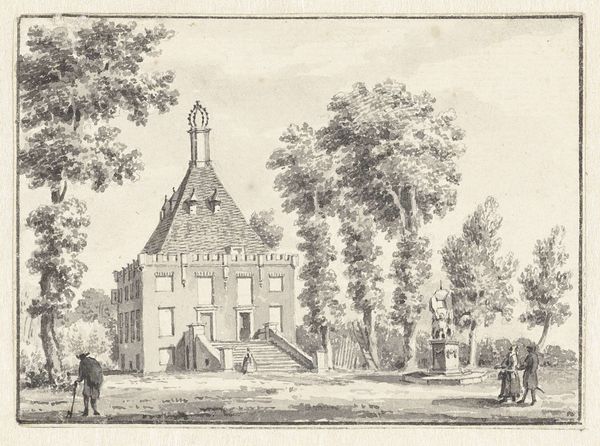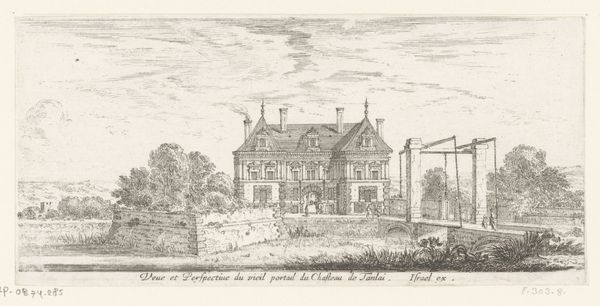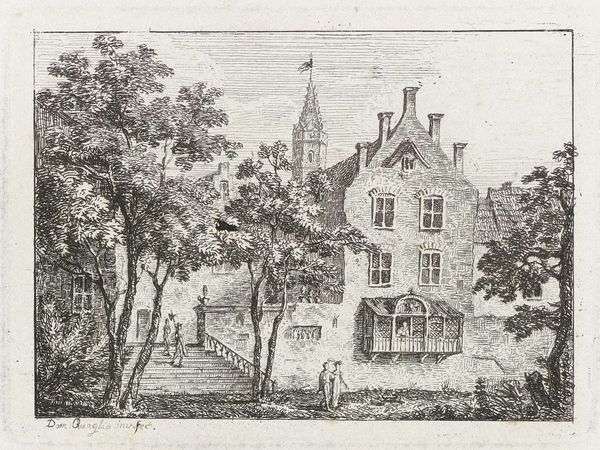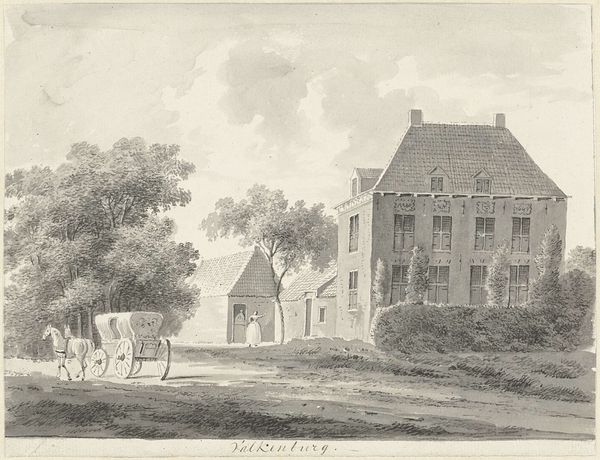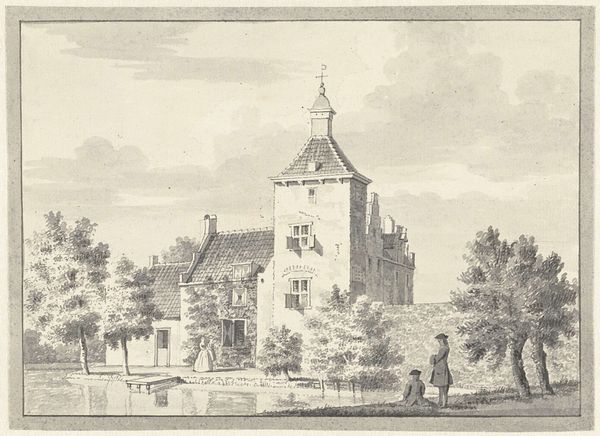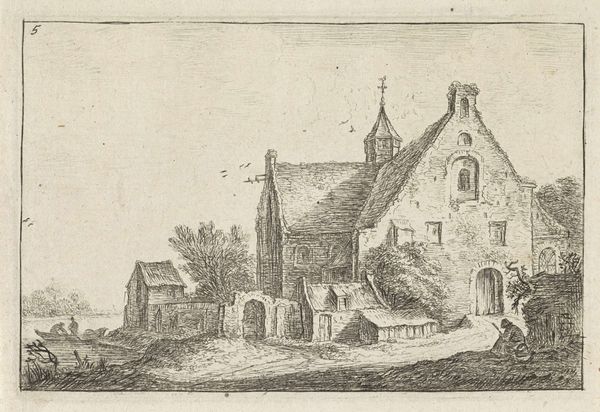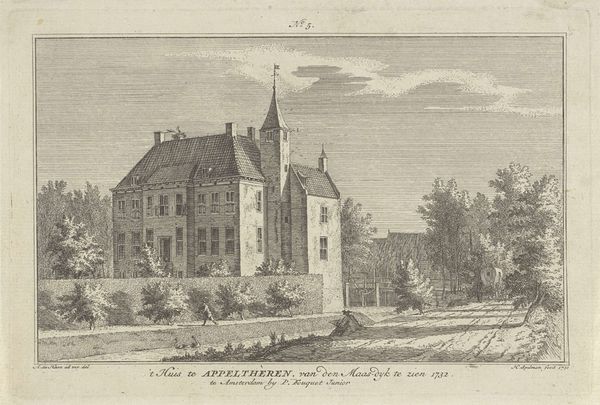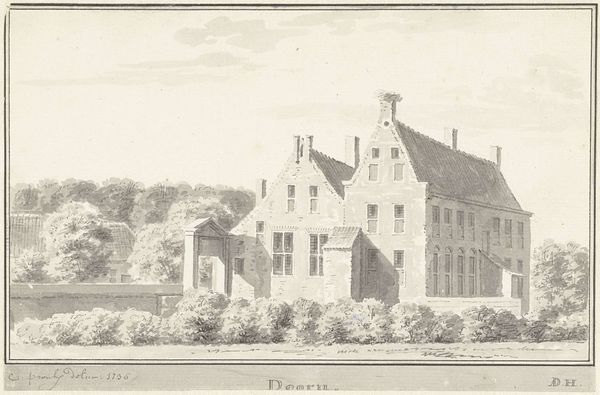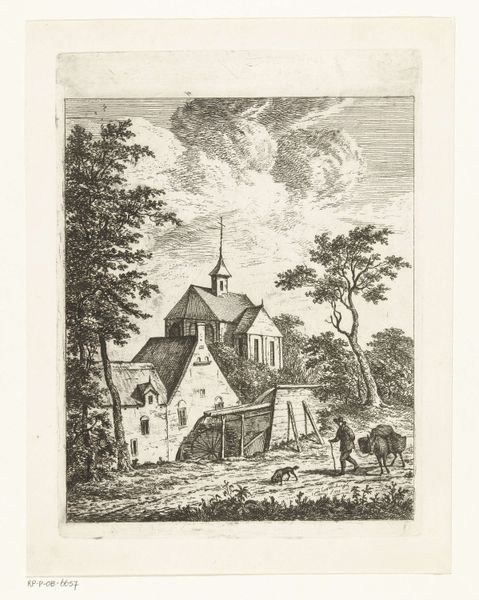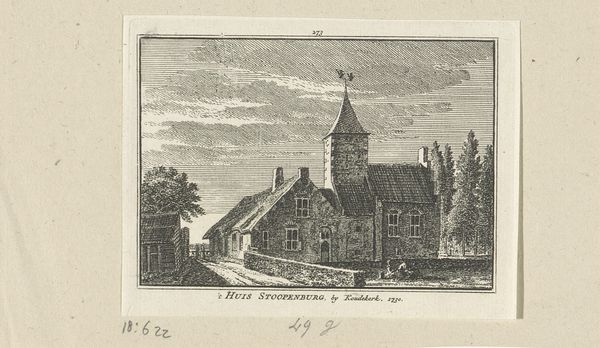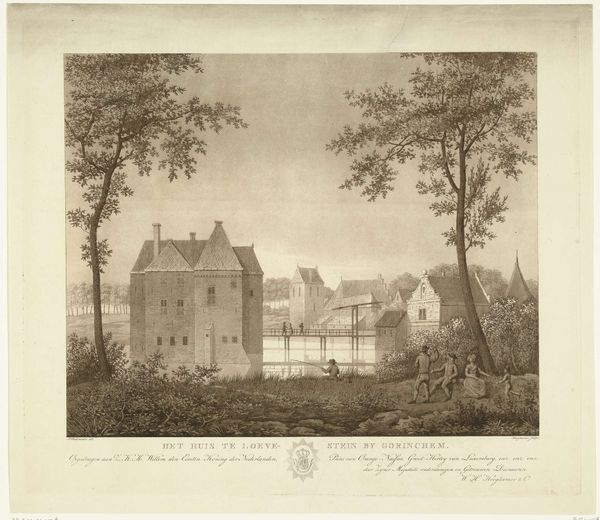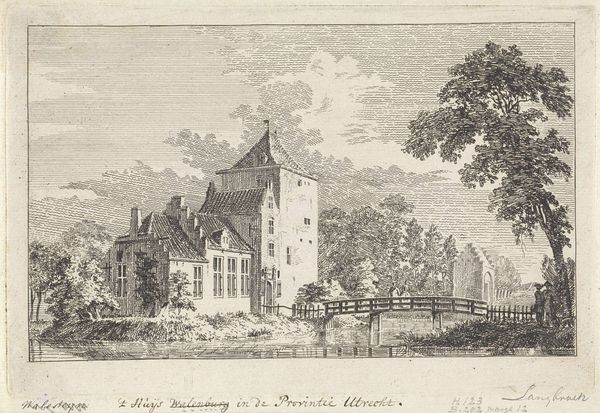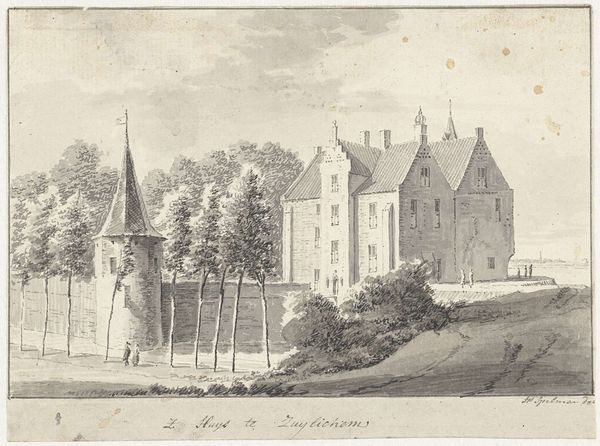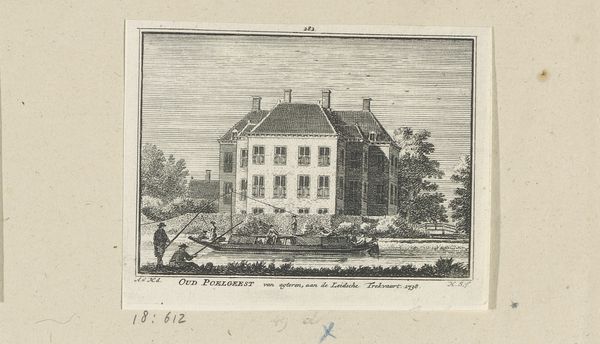
print, engraving, architecture
#
dutch-golden-age
# print
#
landscape
#
engraving
#
architecture
#
realism
Dimensions: height 155 mm, width 215 mm
Copyright: Rijks Museum: Open Domain
Curator: Hendrik Spilman’s print, dating from about 1737 to 1740, presents a view of Huis Appelenburg, using engraving techniques. It's currently held in the Rijksmuseum. Editor: Immediately, I’m struck by the meticulous detail—almost obsessive, really—in the brickwork and the reflective surface of the water. It gives off an almost uncanny stillness. Curator: Considering the context of Dutch Golden Age art, the precision speaks volumes about the value placed on accuracy and observation. The print meticulously depicts the architecture and surrounding landscape, reflecting a culture deeply invested in property, status, and the visualization thereof. Who exactly were its consumers? Editor: Right, this wouldn't have been some readily accessible print. The skill involved speaks to labor—skilled artisans crafting the image, and by extension, crafting a particular vision of power, and perhaps aspiration too. The architectural detail suggests a patron with clear ideas of how they wished their domain to be viewed and, subsequently, consumed as image. Curator: Indeed. The level of detail could also serve a specific function: Perhaps documenting property for legal or inheritance purposes. We might also examine the politics of displaying such imagery, subtly reinforcing social hierarchies. Were such houses, and subsequently such images of them, accessible to the population, and what did access signify? Editor: Thinking about materials, though, the paper itself signifies something. Consider the production, transport and sale of paper and ink - all components reliant upon extensive material processes and networks of commerce, many of them global. Curator: Good point. Focusing on those connections offers new entry points, opening new historical and social layers to view the artwork through. Perhaps its most important facet may not be purely its aesthetic properties, but the wealth of meaning the work reflects in historical context. Editor: Agreed. I find that a careful consideration of the work's making and materials can help unpack its social narratives, allowing us to engage in productive critical examination. It seems appropriate to allow the work to resonate and allow for continued questions around its consumption to shape it's reception, and therefore life. Curator: Precisely, it prompts ongoing dialogue. Editor: A continuous investigation, if you will.
Comments
No comments
Be the first to comment and join the conversation on the ultimate creative platform.
